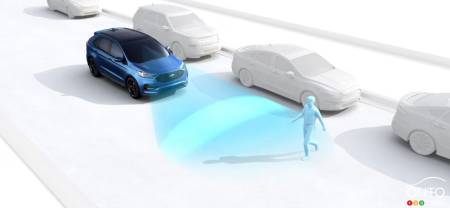Recent technological advances in the automotive world have taken automotive safety taken to a level unimaginable just 20 or 30 years ago. Starting in 2029, auto manufacturers will have to equip all new models being delivered to customers with an automatic emergency braking system.
The technology is well known and present on many models today. However, it is often part of an option package, or found on higher-end versions of a model range.
The NHTSA (National Highway Traffic Safety Administration), the U.S. equivalent of Transport Canada, will make automatic emergency braking mandatory on new vehicles. The feature will need to be accompanied by two others: forward collision warning and emergency braking for pedestrians.
According to the NHTSA, the presence of these technologies in all new vehicles will save 360 lives a year and reduce the number of injuries by 24,000.

This is not a nascent technology - emergency braking is already widespread. As per Motor1, by the end of last year 20 automakers had complied with the IIHS (Insurance Institute for Highway Safety) requirement to equip more than 95 percent of the vehicles they sell in the U.S. with automatic emergency braking. As of 2019, to earn Consumer Reports' "Top Picks" rating, their vehicles must offer automatic emergency braking for pedestrians.
With or without regulations, it was likely only a matter of time before all vehicles are equipped with all automatic emergency braking devices. But the new federal standards won't stop there; they will require that the systems meet certain performance conditions.
For example, all vehicles will have to be capable of stopping to avoid a collision with a vehicle if they are travelling at speeds of up to 62 mph (100 km/h). The system must also detect pedestrians, day or night. Also, automatic emergency braking will have to apply the brakes at speeds of up to 90 mph (145 km/h) when it detects an imminent collision with another vehicle, and 45 mph (72 km/h) when it detects a pedestrian.
The only surprising part of this new regulation, in fact, is the choice of 2029 for its implementation. Considering that the majority of vehicles already have this kind of device, it seems to us the requirement could be imposed sooner.
Better late than never, as the saying goes.



